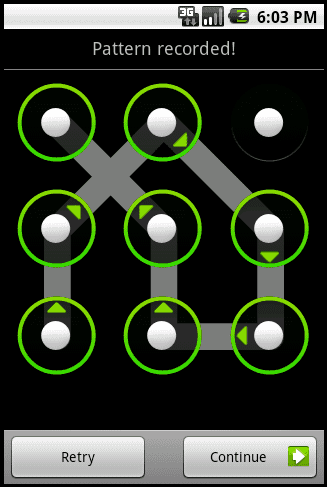I'm working on a version of Password Safe for android. Password Safe uses a passphrase to encrypt your passwords, but typing out long passphrases on a smartphone can be tedious, especially if they're masked. I'd like to investigate using alternatives to a passphrase, such as arrays of simple images.
Are there any good examples of such password methods? What kinds of images are best? Zener Cards seem like a good choice but don't seem to lend themselves to mnemonic devices, certainly not for the number of values you'd need to get a strong passphrase.
EDIT: Some precepts might help. The point of password safe is that the file containing the passwords is encrypted with a strong key that is never stored. On a PC this strong key is a cryptographic hash of a phrase or word you enter when you want to unlock the safe. The safe automatically 'forgets' the password you gave it and drops all the unencrypted versions of the data after X minutes so that you're not vulnerable.
Ideally, I'd like to see a version of password safe that can be decrypted with one of two equally strong keys, with one of the keys being suited to an alphanumeric keyboard, while the other one would be the answer to the question.
So far the best idea I've come up with is to allow a user to enter a phrase for which a rebus could be created, and have an image based rebus entry be the resulting input method.
